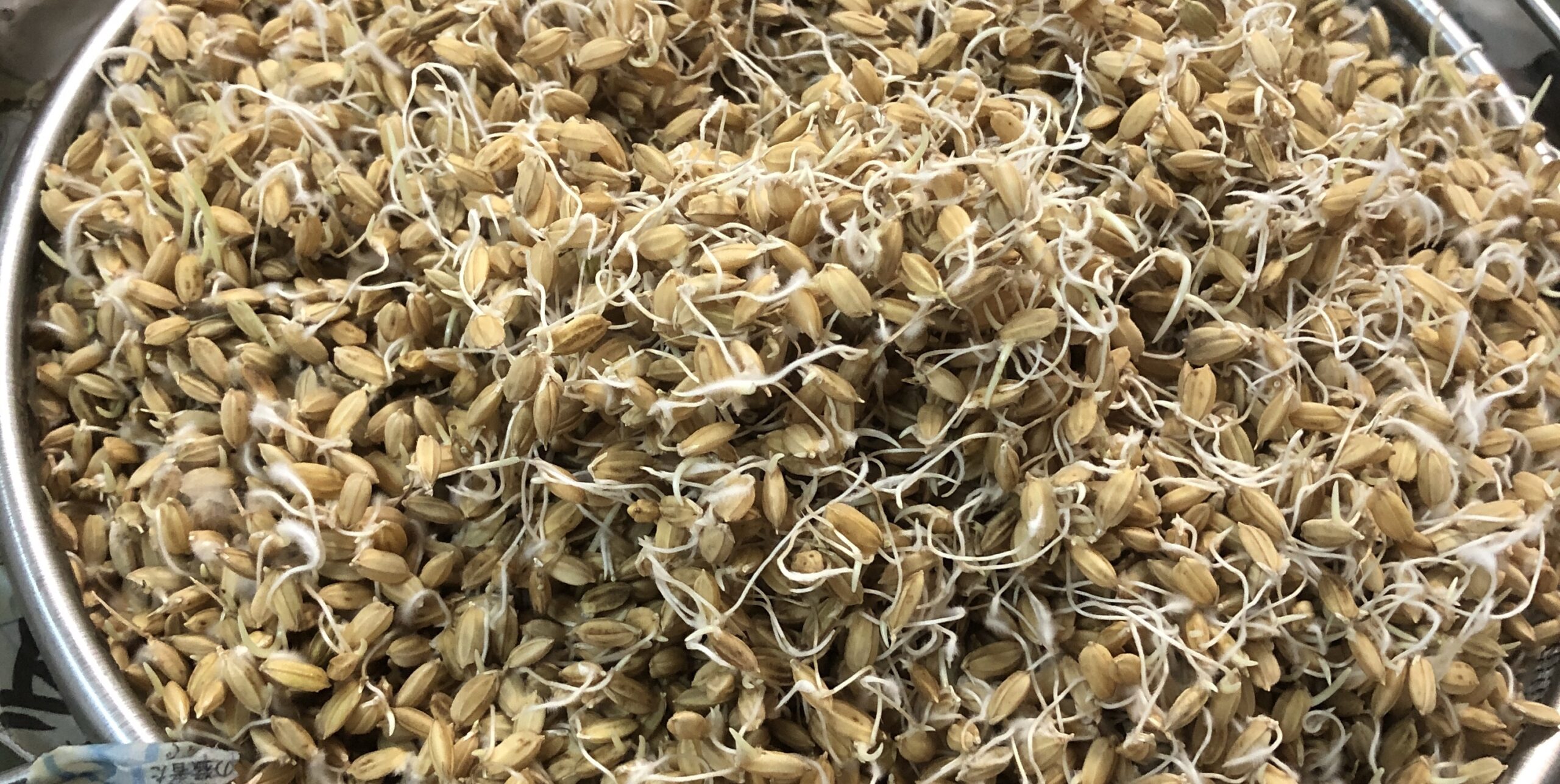米芽(まいが?こめが?) 人間の考えだしたアイデアっていうのは大体先達がやっているもので 「日本には米いっぱいあるやん?」 「麦芽ってあるのに米芽ってないのかな?」 って調べるとやっぱり色々と論文が出てきます 他にも粟や蕎麦のモルトなど、実は世の中には色々なモルトがあります 蕎麦モルトなんかもありますね 種が芽を出すときに、自分が蓄えた澱粉を溶かすために酵素を出します その酵素を利用するのが麦芽や米芽が蕎麦芽?です でそれを水分を調節しつつ乾燥させると、酵素活性を維持しながら種の中で糖化させることができます モルトっていうのは酵素、糖、微細化された澱粉が一つの殻に入っているイメージでしょうか もちろん種類が色々あるのはその配合の違いですね 完全に糖化されて乾燥したものは中の糖分が結晶化して飴みたいなっているカラメルモルトや コーヒー豆の深煎りのようなローストモルト などなどモルトには様々な種類が ではなぜ、麦芽ばかりで 米芽は作られてこなかったんでしょうか 論文を読む限り、米芽は圧倒的に麦芽に比べて酵素の力が弱いという研究結果が出ています 実際に発芽試験をするとわかるんですが、大麦に芽を生やしていくと早い段階で澱粉が溶けます それに比べて米は芽が出ても澱粉が溶けるのが非常にゆっくり、数cm伸びても溶けないなんてことも 海外の文献なんかでも イタリア米の〇〇は酵素力価が高いとか 国内の論文でもジベレリンで休眠打破した米は酵素力価アップした みたいな論文を見かけます でもやっぱり麦芽の酵素力が一番高い おそらくその植物自体の生き残るために、スタートダッシュ型の大麦、スロースタート型の米のように酵素の使い方が違うのだと思います Rice Sprouts (Maiga? Komega?) When it comes to ideas that humans come up with, they are usually based on what predecessors have already done. So, I thought, "Japan has plenty of rice, right? Then why isn't there rice malt?" When I researched it, various papers indeed came up. In addition to barley malt, there are actually various types of malt in the world, such as millet and buckwheat malt. There is also buckwheat malt, for example. When a seed sprouts, it releases enzymes to dissolve the starch it has stored. Barley malt, rice malt, and buckwheat malt utilize these enzymes. By adjusting the moisture content and drying them, the enzymes can be maintained and the starch can be converted into sugar within the seed. Malt can be imagined as a combination of enzymes, sugar, and finely ground starch contained within a shell. Of course, the different types of malt are due to variations in their composition. Completely converted and dried malt crystallizes the sugars inside, resembling caramel malt, or it can be roasted like dark roasted coffee beans, resulting in roasted malt. There are various types of malt available. So, why has rice malt not been produced as much as barley malt? According to the research papers, rice malt has been found to have significantly weaker enzyme activity compared to barley malt. This can be observed by conducting germination tests. When barley sprouts, starch dissolves at an early stage. In contrast, even if rice sprouts, the starch dissolves very slowly, and it may not dissolve even after growing several centimeters. Even in foreign literature, I come across papers stating that "Italian rice has high enzyme activity" or "Rice treated with gibberellin in domestic papers showed increased enzyme activity." However, barley malt still has the highest enzyme activity. Presumably, for the survival of the plant itself, barley, which has a sprint-like start, and rice, which has a slow start, have different ways of utilizing enzymes.
米芽(まいが?こめが?){ABOUT RICE MALT}

